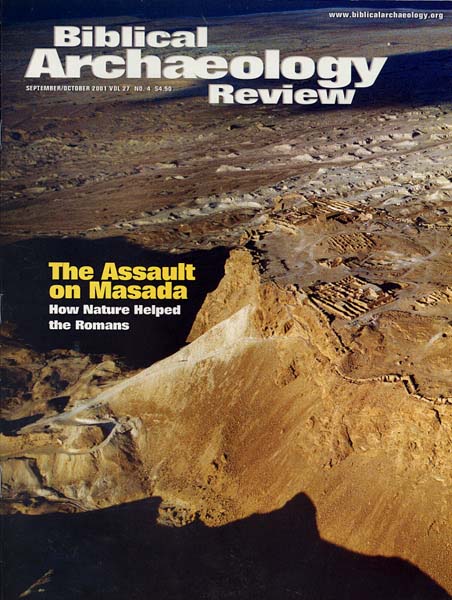Biblical Archaeology Review, September/October 2001

Features
Hollywood could not have scripted it better: A band of 967 Jewish rebels retreats to a desert mountaintop fortress following the destruction of Jerusalem by the Romans in 70 A.D. Two years later the Roman army sets out to quell this last vestige of the Great Jewish Revolt. Finally, in a massive construction effort, […]
Ever wonder how scholars date the reigns of the Israelite kings but were too embarrassed to ask? If so, this is the article for you. The short answer is that scholars use a variety of approaches and data from numerous sources to deduce regnal years. Take, for example, the reign of King Solomon, […]
People who hear of it for the first time are always surprised: Ancient Jews practiced secondary burial, gathering into bone boxes called ossuaries the bones of their dead a year or so after death, when the flesh had desiccated and fallen off. Ossilegium, as scholars call it today, was practiced by Jews mainly in […]
I read an interesting article in a recent issue of the Israel Exploration Journal that intrigued but also saddened me.1 It is about 16 eulogiai (singular, eulogia) inscribed in Greek simply with the name “Solomon.” A eulogia, literally, “blessing,” is a small token that operated as a kind of good-luck charm, mostly associated with […]
